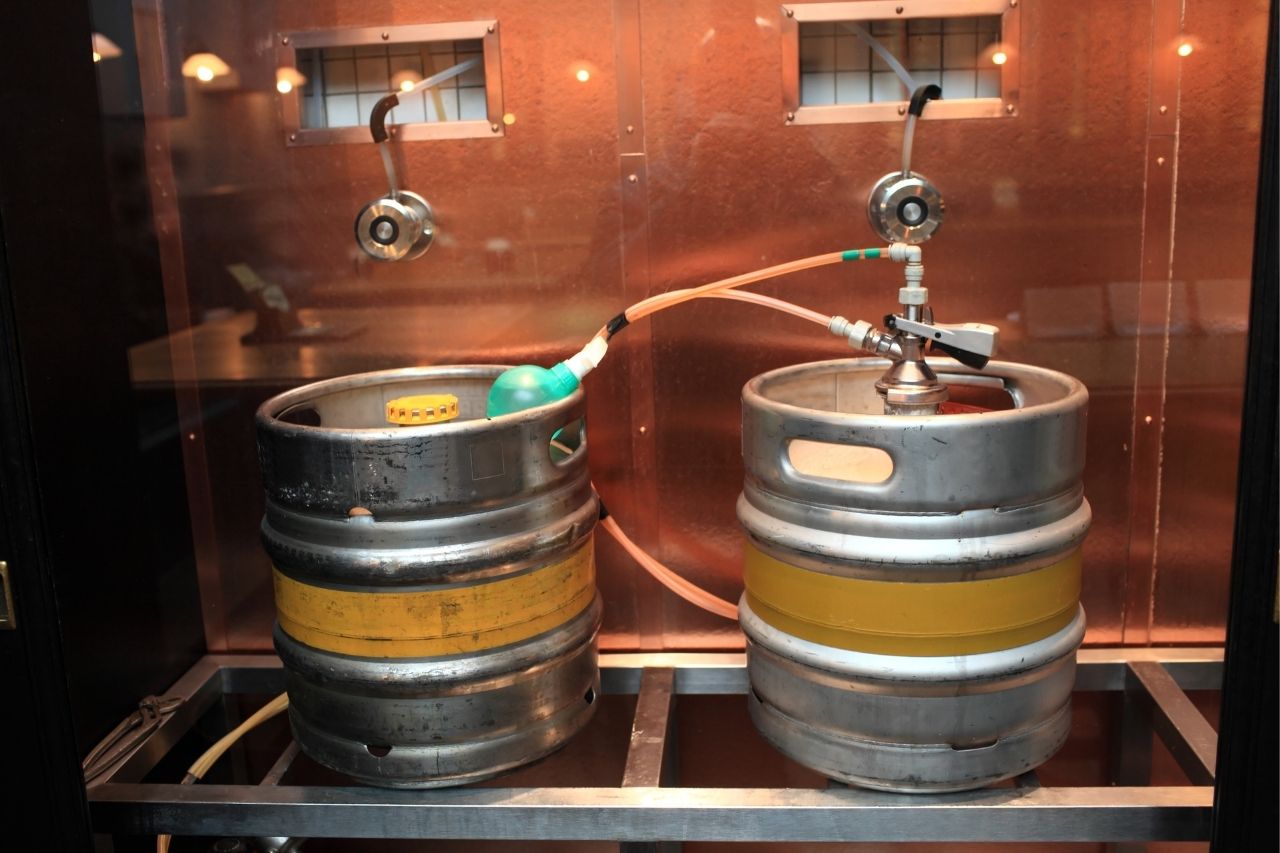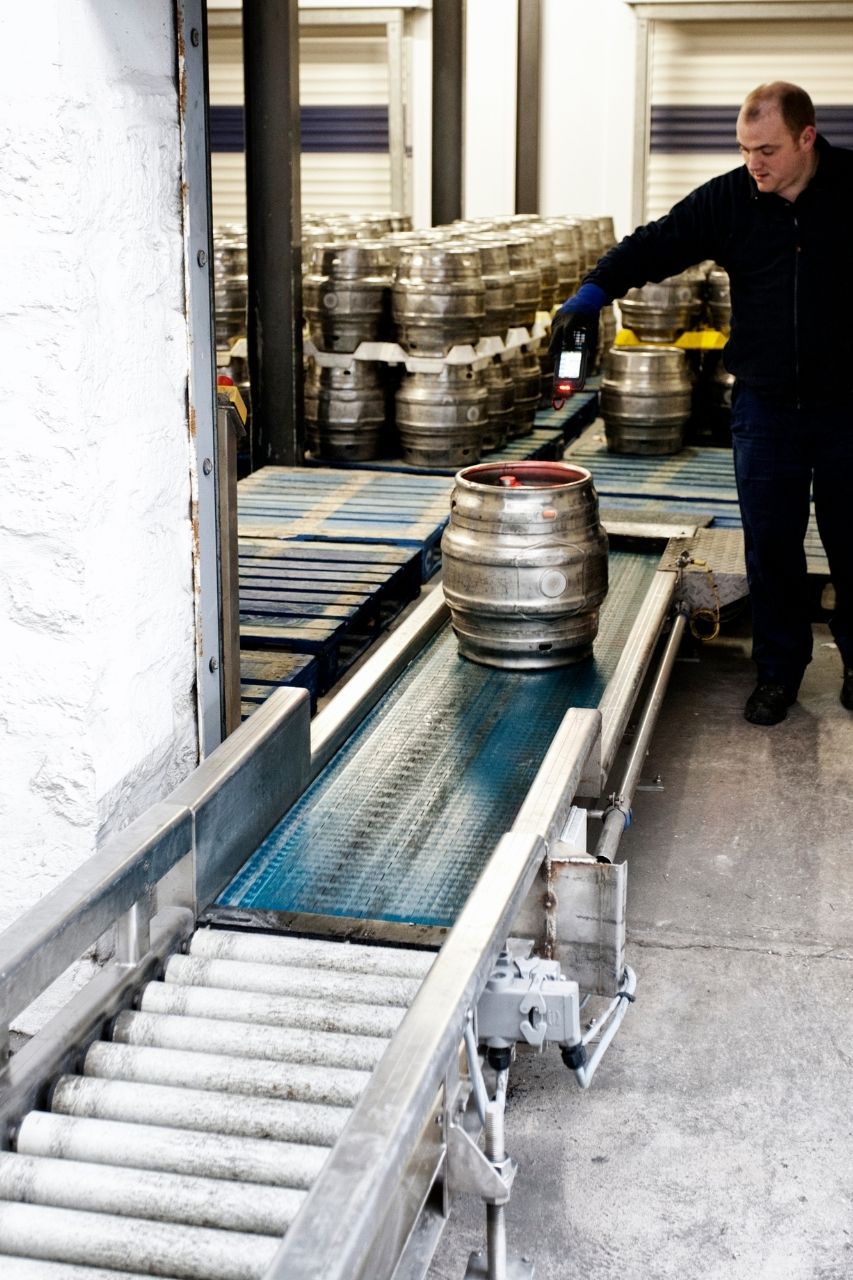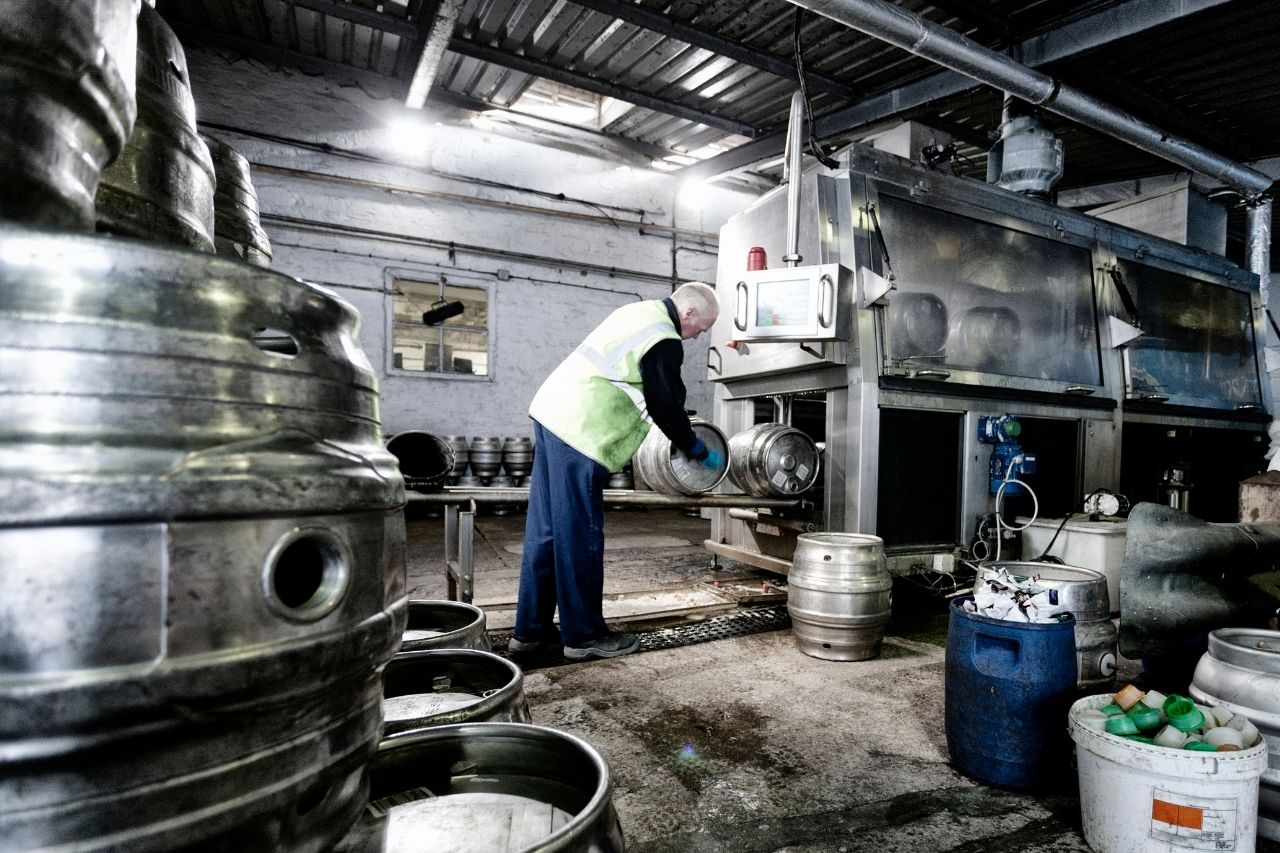Learn How To Clean a Keg at Home
Learn how to clean a keg by yourself with our easy 10-steps method, recommended by our experts for complete effectiveness. Read on and enjoy clean kegs!

How to clean a keg at home? You can easily learn how to do that with warm water, cleaning equipment and an alkali solution. Our step-by-step method works for both Sanke (commercial) and Cornelius kegs.
By following a few simple steps and putting in a little effort, you’ll master the art of cleaning a keg in no time.
How To Clean a Keg?
Cleaning and sanitizing your beer kegs is an extremely important step in homebrewing to avoid spoilage, cross-contamination, or off-flavors. Most brewing experts follow a standard keg cleaning procedure. In this article, we’ll explore the 10 crucial steps to clean a keg and prepare it for the next fresh beer batch.
For cleaning a keg properly at home, you will need the things mentioned below:
- Rubber Gloves
- Alkaline solution or cleaning solution
- Sanitizing solution or no-rinse cleansing powder
- Hex shaped wrench or keg spear compression tool
- Cleaning tools and brushes
- Bowl or bucket
- Hot water
Step 1: Get Rid of Trapped Gas in the Keg
First, you must get rid of any gas trapped inside the keg. This is a crucial step and should not be skipped for safety purposes. You can depressurize the keg by carefully releasing the valve. When the hissing sound completely stops, you’ll know it’s time to proceed to the next step.
Step 2: Carefully Disassemble All the Components

Here comes the fun part! All you have to do is disassemble all the components (including the tiny parts) of the Cornelius keg with care. The process may take a little long but it is vital to make sure that each and every corner of the keg is completely clean and has been thoroughly sanitized.
Once the pressure has been released, you can safely remove the lid from the top, along with the sealing O ring. If you face difficulty in removing the lid, try turning it by 90 degrees to unlock. Put all the components and parts of the keg in a separate bowl or bucket to clean them later on.
Tip
First-time keg cleaners might have a hard time remembering which part goes where. To avoid any disaster of misplacing the parts, we advise you to label the components so that you have a point of reference when you put the keg back together.
Step 3: Time to Unscrew a Cornelius Keg
The right size of the wrench depends on the dimensions of the valve assemblies. To unscrew a commercial keg (Sanke style), you will have to use a keg spear compression tool to remove the keg spear.
For Cornelius keg, make sure you have the exact size of the wrench. Unscrew the two valves assemblies on the top with the aid of a hex-shaped wrench. Take out the liquid posts and place them in a separate bucket. The liquid posts may have small parts attached to them for functional purposes. Ensure that you clean around and inside any gaps of the tiny parts attached to the liquid posts.
Step 4: Clean the Surface of the Keg
Most people don’t consider cleaning the outer surface of a keg. This is indeed an optional step. Start by cleaning the outer part of the keg with wipes or wet towels to get rid of the dirt that has accumulated. Note that cleaning the surface of the keg does not have any effect on the brewing process, but it does affect the overall cleanliness of the brewing environment.
Step 5: Clean a Commercial Keg with Hot Water
Fill your keg entirely with hot water. Along with that, wash all other parts and components of the beer keg with hot water as part of the initial wash. Repeat the hot-water rinse step a few times. Proper rinsing and washing help to get beer out of a keg with less effort. Drain the water after rinsing.
Step 6: What Can You Use To Clean a Keg?

There could be various residues inside the keg, which is why a hot water rinse may not be sufficient. Use an alkali wash to clean a commercial keg properly.
The most common product used for cleaning kegs at home or commercially is PBW (Powdered Brewery Wash). The solution easily breaks down grime, buildup and residues inside a keg. You can use this alkali wash to clean a keg tap, the inside of the keg and its components.
To do so, mix the PBW with hot water in the recommended proportion. Notice that we mentioned hot water. This is because the alkali solution works best in high temperatures and the cleaning process is also sped up. While preparing the solution, make sure you wear rubber gloves to protect your hands from harsh chemicals and heat.
The mixing direction is indicated on the container itself. Usually, the rule is to mix 3 or 4 ounces of PBW with 1 gallon of water. The ratio changes depending on the amount of water and the size of the keg that needs to be cleaned.
Step 7: Pour the PBW and Hot Water Solution Inside the Keg
Use a long-handled cleaning brush to reach the bottom and corners of the keg. A “twisting and turning” motion of scrubbing helps to clean the beer keg thoroughly. When you’re done, close the lid of the keg. Shake the liquid inside of the keg vigorously to clean it well. The cleaning solution removes the yeast buildup and the organic stains and also oxidizes the inside of the keg. This ensures that every beer batch is safe to drink.
Tip: If the keg is too heavy to lift, lie it down on the ground and roll it over so the solution is well shaken. Repeat the process for 20-30 minutes. Leave the solution inside for a few hours or overnight before pouring it out completely.
Step 8: Clean a Keg Tap and Other Components with Solution
Use the same PBW solution to clean the corny keg parts that are placed in a separate bowl or bucket. When you’re cleaning the components of the keg, try to reach every nook and corner and clean thoroughly with the help of a brush. To clean the inside of the liquid posts, you will need a very narrow brush. Soak the keg tap and small components in alkali wash for a few hours or overnight for proper cleaning.
Step 9: Do You Need to Sanitize a Corny Keg?
Yes, you should! It is the last crucial cleaning step: sanitizing. There are various kinds of sanitizers available in the market, with the most common ones being Iodophor, Bleach, Chlorine dioxide and Peracetic Acid. Products like Star San are popular sanitizers used by professional brewers to clean a commercial keg and a Cornelius keg. The sanitizer disinfects or kills any remaining bacteria, fungi or viruses that may be still present.
Step 10: Final Hot Water Rinse and Assembling
Use hot water to rinse off the keg components in the bucket or bowl. Once everything has been washed, set the components aside on a clean and dry surface. Similarly, drain the sanitizer solution from the keg and let it sit upright. If you’ve used a no-rinse cleaning solution, you can skip rinsing.
Once dry, you can reassemble the keg. If you’ve already marked the components while disassembling them, you’ll now be able to easily identify the right position for each of the parts.
Congrats! You’ve learned all the steps to clean a corny keg. Once you perform these steps, it only gets easier with each cleaning session. Try to clean your beer keg after a few uses to ensure the best results and fresh flavors.
Things to Keep in Mind To Clean a Beer Keg
Whether you’ve bought a brand new beer keg or have purchased a used one, you must clean it thoroughly using both alkali wash and a sanitizing solution. To avoid the risk of beer spoilage or bad flavors, we highly suggest you take some time to clean your keg with hot water after using it.
Make it a habit to clean a corny keg as soon as it is empty. If not, you must at least properly clean it once every month. Regular cleaning and sanitization is the secret to enjoying great beer at all times.
FAQ
What is the fastest way to clean a beer keg at home?
Use a pressure washer to quickly clean a beer keg at home.
Do you need to sterilize cleaning instruments before cleaning a beer keg?
Yes, sterilize cleaning instruments before cleaning a beer keg to ensure the removal of all bacteria and yeast.
Can I clean a beer keg with dish soap?
While dish soap may be effective at removing visible dirt, it is not recommended for cleaning a beer keg as it may leave residue or affect beer taste.
Conclusion
Cleaning a beer keg (both Sanke and Cornelius style) is not as difficult as it may seem at first. We’ve learned the important steps involved to properly clean and sanitize a keg. Let’s sum up to make sure you’re ready to clean your keg all on your own.
 You need a few special tools and cleaning solutions.
You need a few special tools and cleaning solutions.- Maintain caution by depressurizing the keg and wearing rubber gloves.
- Disassemble all the parts of the keg and wash everything individually with care.
- Always use hot water to rinse off and clean deeply.
- PBW (Powdered Brewery Wash) and Sanitizing Solution are two important cleaning agents in the process.
- Shake the keg with the alkali wash inside and let it sit overnight.
- Make sure that you put all the components properly while reassembling.
- Try to wash your beer keg after every use with hot water.
You may find keg cleaning kits, machines and services in specialized stores but if you’re planning to do it yourself, then these steps could come to your rescue. Once you’ve done the hard work, you’ll be proud to sip on some fresh and tasty beer!

 You need a few special tools and cleaning solutions.
You need a few special tools and cleaning solutions.




